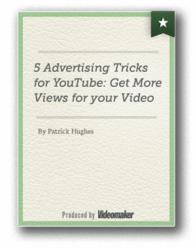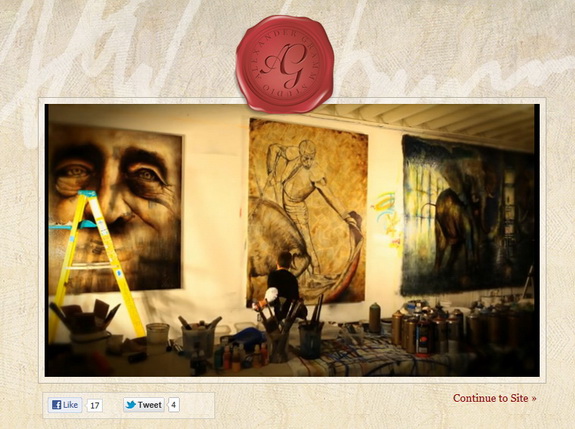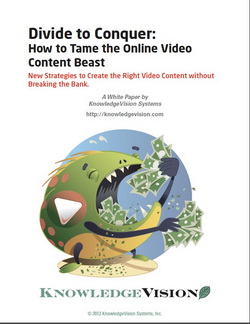PHOTOGRAPHERS. This year, PhotoPlus Expo featured eight sessions designed to help professional photographers make the transition from shooting stills to shooting video. In the two seminars I attended, Vincent Laforet and Tyler Stableford showed excellent examples of the types of commercials and short films that have been produced with video-enabled DSLRs or hybrid video/still cameras.
BEHIND THE SCENES – “Neighborhood” from Vincent Laforet on Vimeo.
In each seminar, attendees seemed primarily interested in learning more about what types of gear they might need, and how to get help with audio production and video editing. (I’m currently compiling a list of resources that can help answer some of these questions.)
Famous Footwear – “Neighborhood” Spot from Vincent Laforet on Vimeo.
But first, it’s important to understand why you might want to consider adding video capabilities to your photography business. You may be surprised to see how diverse the opportunities will be (and why not every video production must be as elaborate as the set up Laforet used to shoot the Famous Footwear commercial shown above).
1. The demand for online video is starting to explode.
Now that high-quality video can be transmitted through the Internet to mobile devices, tablet computers, smartphones, digital signage, and wall displays in stores, museums, and homes, the demand for professionally produced content is really just starting to ramp up.
Online video is being used not just for entertainment and gaming, but also for advertising, training seminars, product demonstrations, customer testimonials, resumes, facility tours, corporate events, book promotion, and much more.
Some applications listed on the Cinestories website include: corporate meetings, 5- to 7-minute wedding storybook films, bar/bat mitzvahs, cultural performances, sporting events, festivals, concerts, birth announcements, family music videos, senior music videos, vacation films, day-in-the-life videos, government and corporate training, documentaries, and short films.
2. Traditional buyers of photography services will be spending money on video.
Advertisers, corporations, and publishers are becoming increasingly interested in the economics and targeted reach of “Web TV” for which lower-budget, high-quality content will be produced to attract niche audiences with special interests. The rise of Web TV is opening up a vast, new middle ground between the low-budget/low-quality user-generated content we watch on YouTube and the big-budget, premium-quality Hollywood productions we see in movie theatres or on network TV.
Here are just a few random examples and statistics that help explain why the demand for video services will grow:
- According to JWT Intelligence, magazine publishers will expand into broadcasting. In addition to producing video for the iPad versions of the magazines, publishers such as Hearst, Time Inc., and Meredith will be supplying content to the 100 new channels of original content that YouTube soon will be launching. Content will range from 30-second clips to 30-minute episodes.
- The number of people who watch online videos has been increasing. According to comScore, 180 million U.S. Internet users watched online video content in August, 2011 for an average of 18 hours per viewer. An October 2011 survey conducted by Burst Media found that 71.6% of web users watch online video content in a typical week, with 39% watching between one and five hours per week. In their Visual Networking Index Forecast, Cisco predicts that by the year 2015, online video will account for two-thirds of all consumer data traffic.
- The Burst Media survey showed that 18% of online video viewers took some kind of action after seeing an online video ad. A survey by Internet Researcher showed that online customers who view product videos are much more likely to buy than visitors who don’t watch videos. A Forrester Research study found that having video on your website substantially increases the likelihood that your site will appear on the front page of Google search results.
- According to e-Marketer, spending on online video ads is expected to rise from $1.5 billion in 2010 to $5.5 billion in 2014.
3. Individuals are being encouraged to have videos professionally produced.
A recent article in More magazine (for women over 40) emphasized the need for job-seekers to get a professionally produced video resume. According to Catharine Fennell, CEO of VideoBIO, “Filming a video shows that you’re confident, innovative, and an early adopter. A great video is about making a personal connection with your audience, sharing experience, and establishing credibility.”
Authors, consultants, and conference speakers are being advised to add video to their websites as well. Perhaps the same people who hire portrait photographers for head shots will want to have web video “portraits” shot during the same session.
4. Filmmakers are adopting motion-picture cameras that can shoot stills.
One of the hybrid motion/still cameras that filmmakers have quickly embraced is the $50,000 RED Epic camera, which captures 14 megapixel raw frames at 120 frames per second. The camera was used to shoot feature films such as “The Social Network” and “Contagion”and is currently being used to shoot “The Hobbit.” (The camera has also been used by photographers Bruce Weber and Greg Williams to shoot covers and spreads for fashion magazines.)
In an article in the September 2011 issue of Rangefinder magazine, John Rettie notes that high-end cinematographers have also “responded enthusiastically to the high-quality video that can be obtained from a DSLR at a fraction of the cost of a sophisticated movie camera.”
 Based on the successful use of the ground-breaking EOS 5D Mark II DLSR in Hollywood movies and TV shows, Canon has announced the Cinema EOS System for use in the motion-picture production industry. The announcement, which was made on November 3, includes seven new models of Cinema lenses that are compatible with Super 35 mm-equivalent sensors, an all-new digital cinema camera for high-resolution movie production, and the development of a new Digital SLR camera with 4K movie function.
Based on the successful use of the ground-breaking EOS 5D Mark II DLSR in Hollywood movies and TV shows, Canon has announced the Cinema EOS System for use in the motion-picture production industry. The announcement, which was made on November 3, includes seven new models of Cinema lenses that are compatible with Super 35 mm-equivalent sensors, an all-new digital cinema camera for high-resolution movie production, and the development of a new Digital SLR camera with 4K movie function.
5. Eventually, lower-cost, higher-resolution cameras may empower everyone to “capture the moment.”
One advantage of shooting high-res video is that you won’t miss capturing that perfect, decisive moment that can make a great photograph so memorable. As powerful hybrid cameras inevitably become more affordable, more and more of your current clients will be able to grab terrific still shots from their video footage.
 For example, the new Scarlet-X camera from RED Digital Cinema is designed to further “democratize superlative cinema and professional photography.” Priced at under $10,000, the Scarlet-X allows professional photographers and cinematographers to simultaneously capture true 4K motion footage and 5K RAW still content and “never miss a shot.”
For example, the new Scarlet-X camera from RED Digital Cinema is designed to further “democratize superlative cinema and professional photography.” Priced at under $10,000, the Scarlet-X allows professional photographers and cinematographers to simultaneously capture true 4K motion footage and 5K RAW still content and “never miss a shot.”
In his session on “Cinematography with a DSLR” at the PhotoPlus Conference, Vincent Laforet showed some of the breathtakingly detailed still photographs that he grabbed from video footage shot on the the RED Epic camera.
When Laforet asked photographers to imagine what type of imaging power might be in the hands of consumers five years from now, someone in the audience piped up, “What’s next? A RED Epic smartphone?”
6. Continuing advances in technology will alter existing markets.
In his Rangefinder magazine article, Rettie describes learning to shoot DSLR video from Canon Explorer of Light Bruce Dorn. His article includes this quote from Dorn: “In a perfect world, photographers could easily create a profitable livelihood by simply developing their own unique style, and delivering it to an endless stream of well-heeled and breathlessly excited fans. We would each spend our days effortlessly doing our thing, being appreciated, and never worrying about the relentless evolution of image-making. In reality, the delivery medium is constantly changing, and so is demand.”
In my next video-related post, I will list some of the videography-related sessions that will be presented during the major photography conventions in January and February, 2012. If you have additional training resources that you would like me to include in future posts, send me an e-mail at: eileen.fritsch (at) creativesatworkblog (dot) com.
LINKS
Rangefinder Magazine: Learning How to Capture DSLR Video by John Rettie
Cinestories
JWT Intelligence: Magazines Moving to More Platforms
RED Digital Cinema: Scarlet-X
About RED Digital Cinema
Canon Press Release: Lights! Camera! Action! Canon Makes Hollywood Debut with Launch of Cinema EOS System






